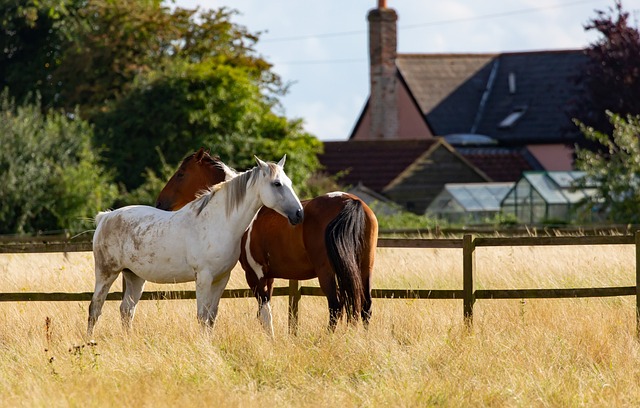Large properties present unique fencing challenges, requiring durable, cost-effective solutions that can cover extensive areas. This article explores various strategies to meet these needs, from understanding specific requirements to comparing traditional and modern fencing options. It delves into budget-friendly materials, creative design ideas, and installation tips, ensuring you make informed choices to efficiently manage costs without compromising quality or aesthetics.
- Understanding Fencing Needs for Large Properties
- Traditional vs Modern Fencing Cost Comparison
- Budget-Friendly Materials and Their Durability
- Creative Design Ideas to Save Money
- Installation Tips for Efficient Cost Savings
Understanding Fencing Needs for Large Properties
When it comes to fencing large properties, understanding the unique needs and challenges is paramount. These extensive plots often require fences that can withstand harsh weather conditions, keep out unwanted intruders or animals, and provide a secure perimeter for years to come. The choice of fence material plays a significant role in determining durability, maintenance requirements, and overall aesthetic appeal.
Additionally, the size and layout of the property dictate the fencing design and installation process. Some properties may have uneven terrain, trees, or other obstructions that necessitate custom solutions. Landscapers and homeowners should consider these factors to select an efficient, cost-effective fencing system tailored to their specific needs.
Traditional vs Modern Fencing Cost Comparison
In terms of cost, traditional fencing methods have long been the go-to option for property owners, offering a sense of security and privacy. However, when it comes to large properties, the expenses can quickly add up due to extensive material requirements and labor costs. On the other hand, modern fencing solutions present a compelling alternative. Innovations in materials science have led to the development of lightweight, durable, and low-maintenance fencing options, significantly reducing overall expenses.
The traditional wooden fence, while aesthetically pleasing, requires regular treatment to prevent rot and insect infestation. In contrast, modern vinyl or aluminum fences are virtually maintenance-free, ensuring long-term cost savings. Additionally, advanced manufacturing techniques enable the production of complex designs at a fraction of the time and cost compared to traditional methods. These modern solutions offer both functionality and visual appeal, making them an attractive choice for large properties seeking a cost-effective yet elegant fencing option.
Budget-Friendly Materials and Their Durability
When it comes to large property fencing, cost-effectiveness shouldn’t come at the expense of durability. Many traditional materials can be expensive, but modern budget-friendly options offer excellent longevity. For instance, vinyl fencing has gained immense popularity due to its affordability and low maintenance requirements. This material is resistant to rot, rust, and damage from UV rays, ensuring it maintains its integrity for years with minimal upkeep.
Composite materials, a blend of wood fibers and plastic, are another durable and cost-efficient choice. They mimic the natural look of wood but don’t suffer from its limitations. These products are fade-resistant, bug-resistant, and can withstand harsh weather conditions, providing a long-lasting solution that requires little to no painting or sealing over time.
Creative Design Ideas to Save Money
When fencing a large property, creative design choices can significantly reduce costs while still achieving an aesthetically pleasing result. One cost-saving approach is to incorporate natural materials like wood or bamboo into your fence design. These materials are generally less expensive than traditional metal or vinyl options and can add warmth and texture to your outdoor space. Consider using split-rail fences, which consist of vertical posts with horizontal rails, offering a classic and rustic look.
Another money-saving idea is to opt for fencing that follows the natural contours of your land instead of creating rigid straight lines. Curved or winding fence designs can reduce the amount of material needed and may even blend in better with the surrounding landscape. Additionally, using reusable or recycled materials, such as old railroad ties or concrete blocks, not only saves money but also contributes to a more sustainable fencing solution.
Installation Tips for Efficient Cost Savings
When installing fencing on a large property, efficient planning and execution can significantly reduce costs. One crucial tip is to group fence installations in phases rather than tackling the entire project at once. This allows for more manageable budgeting and can often secure better pricing from suppliers when purchasing materials in bulk. Additionally, choosing the right type of fencing material based on your region’s climate and local wildlife habits can extend the lifespan of your fence, reducing long-term maintenance expenses.
Another effective strategy is to consider reusable or modular fencing components. These options can be more affordable than custom-built panels and are often easier to install, save time, and minimize labor costs. Moreover, ensuring a clear, well-planned layout before excavation prevents unnecessary material waste and reduces the risk of future repairs.
